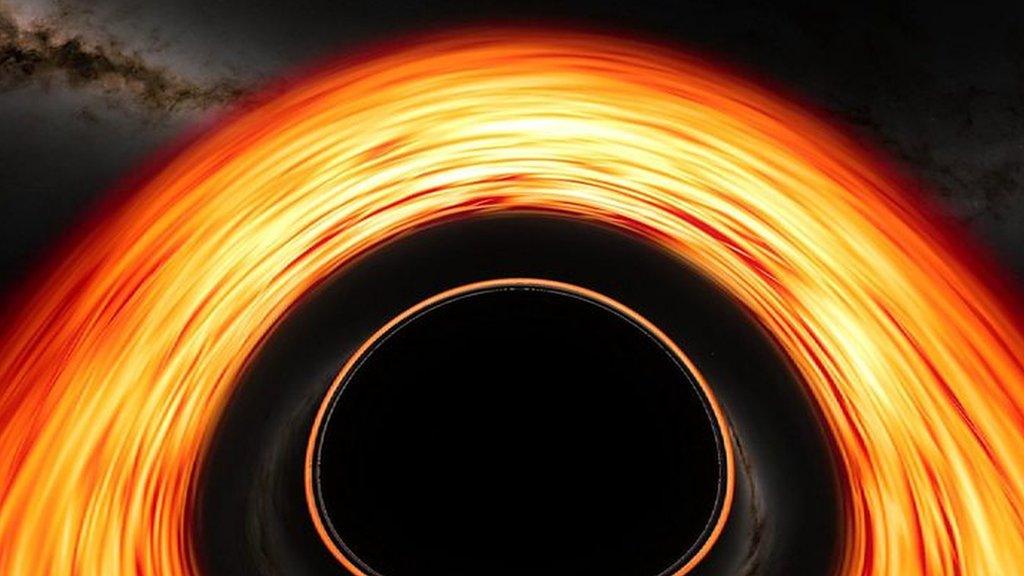Telescopes detect closest pair of supermassive black holes ever seen
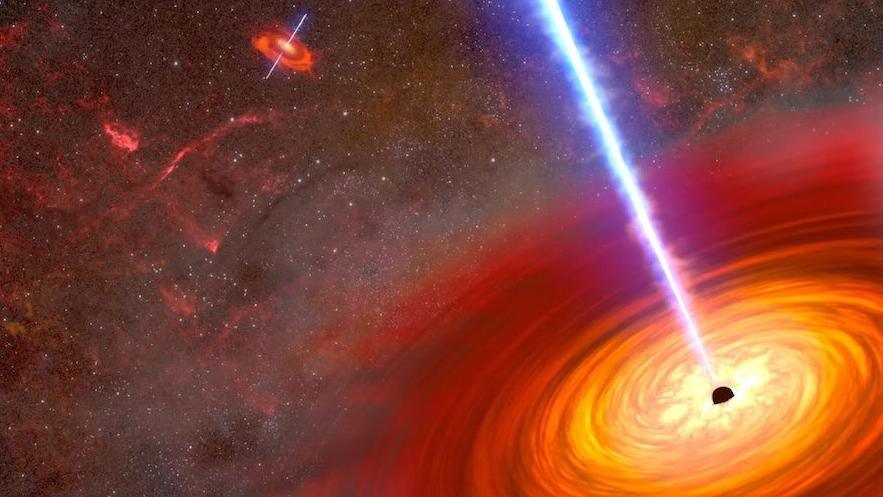
An artist's impression of the two active black holes at the heart of two merging galaxies
- Published
A pair of supermassive black hole neighbours have been spotted by two separate telescopes.
They are at the closest distance to one another that scientists have ever seen before.
Black holes are dying stars with so much gravity that they suck in everything around them, even light.
The discovery was published in a science journal called The Astrophysical Journal on Monday.
“We were not expecting to see something like this,” said lead study author Anna Trindade Falcão.
“This view is not a common occurrence in the nearby universe, and told us there’s something else going on inside the galaxy.”
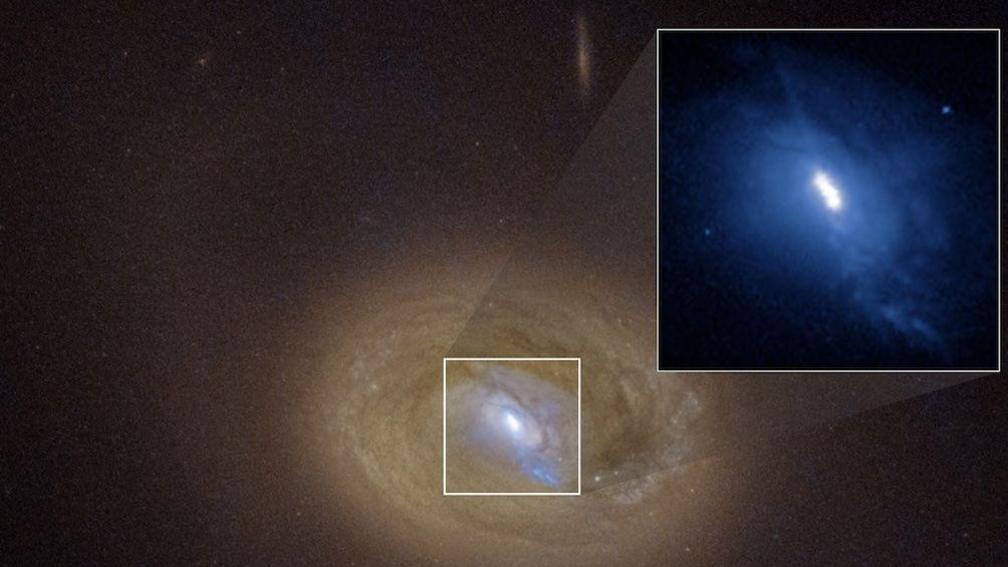
An image of the galaxy MCG-03-34-064 reveals three bright spots at the centre
More spectacular space stories
Mission success: Watch the first ever spacewalk by an amateur astronaut
- Published12 September 2024
Nasa searching for potential for life on Jupiter's moon
- Published15 October 2024
Nasa explains 'spooky space sound' heard by stuck astronauts
- Published5 September 2024
How were the black holes discovered?
The blending of the two galaxies is known as MCG-03-34-064.
Thankfully these two matter-absorbing giants are thought to be 800 million light-years away - incredibly far away from Earth.
The pictures of the merging galaxies taken by the Hubble Telescope showed three bright spots within a glowing gas of a galaxy.
It told the team there was "something else going on" inside the galaxy.
They decided to take another look using the Chandra observatory, which detects X-ray emissions.
Using this information, the scientists realised they were seeing two closely spaced supermassive black holes!
The US's National Aeronautics and Space Administration (Nasa) described it as being like " two Sumo wrestlers squaring off".
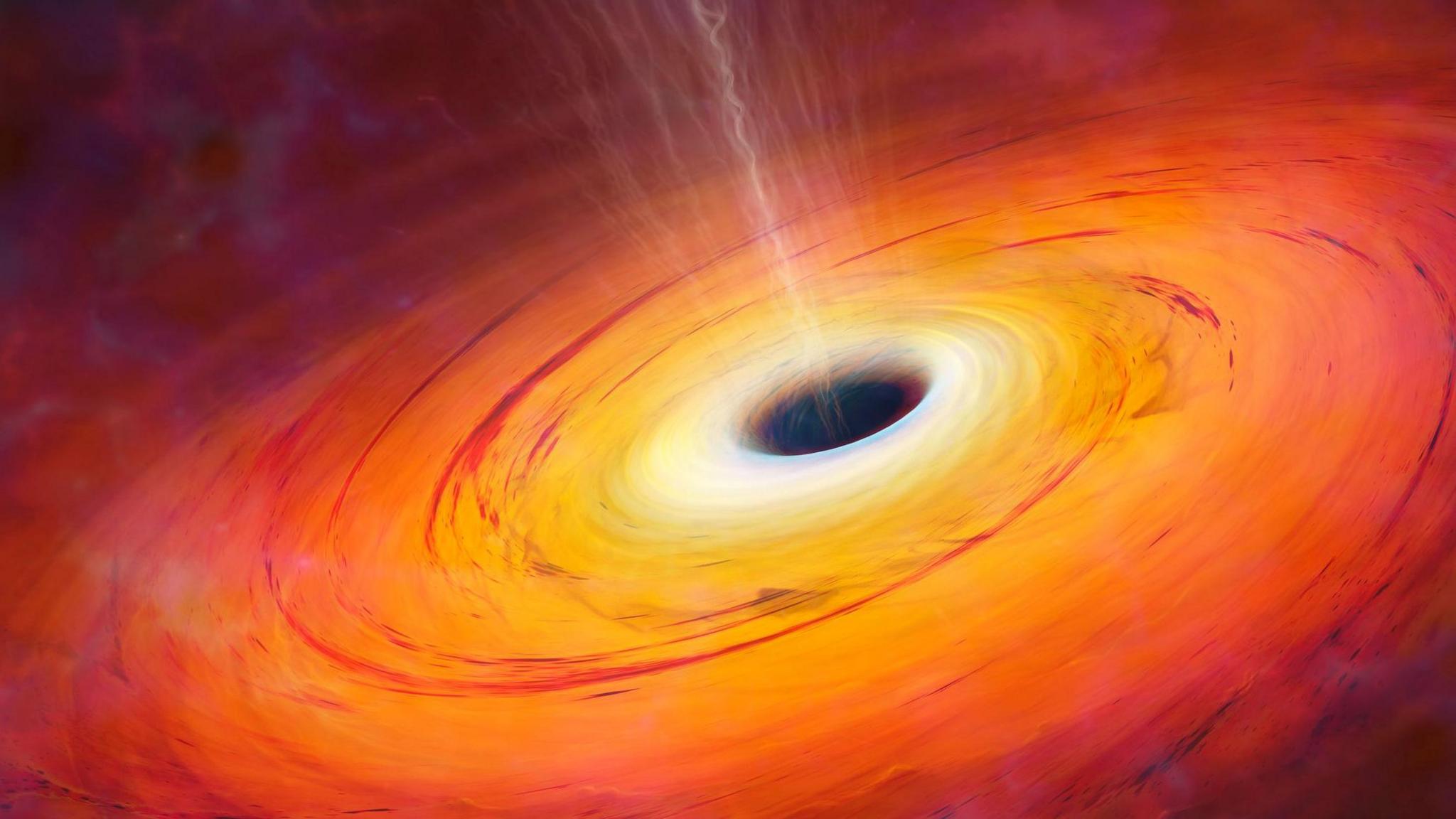
What will happen to the supermassive black holes?
The team say the two supermassive black holes were once at the core of their own host galaxies.
A blending of these galaxies brought them closer together over time.
They will continue to spiral closer and closer together until they eventually become one - how sweet!
Nasa believes this could happen in around 100 million years, "rattling the fabric of space and time as gravitational waves".
Less cute.
This pair of black holes are the closest found in our universe by observing visible and X-ray light.
Closer pairs have been discovered, but only using radio telescopes, so they were not confirmed using other wavelengths.
Pairs like this were likely more common in the early universe, when galaxy mergers were more frequent.
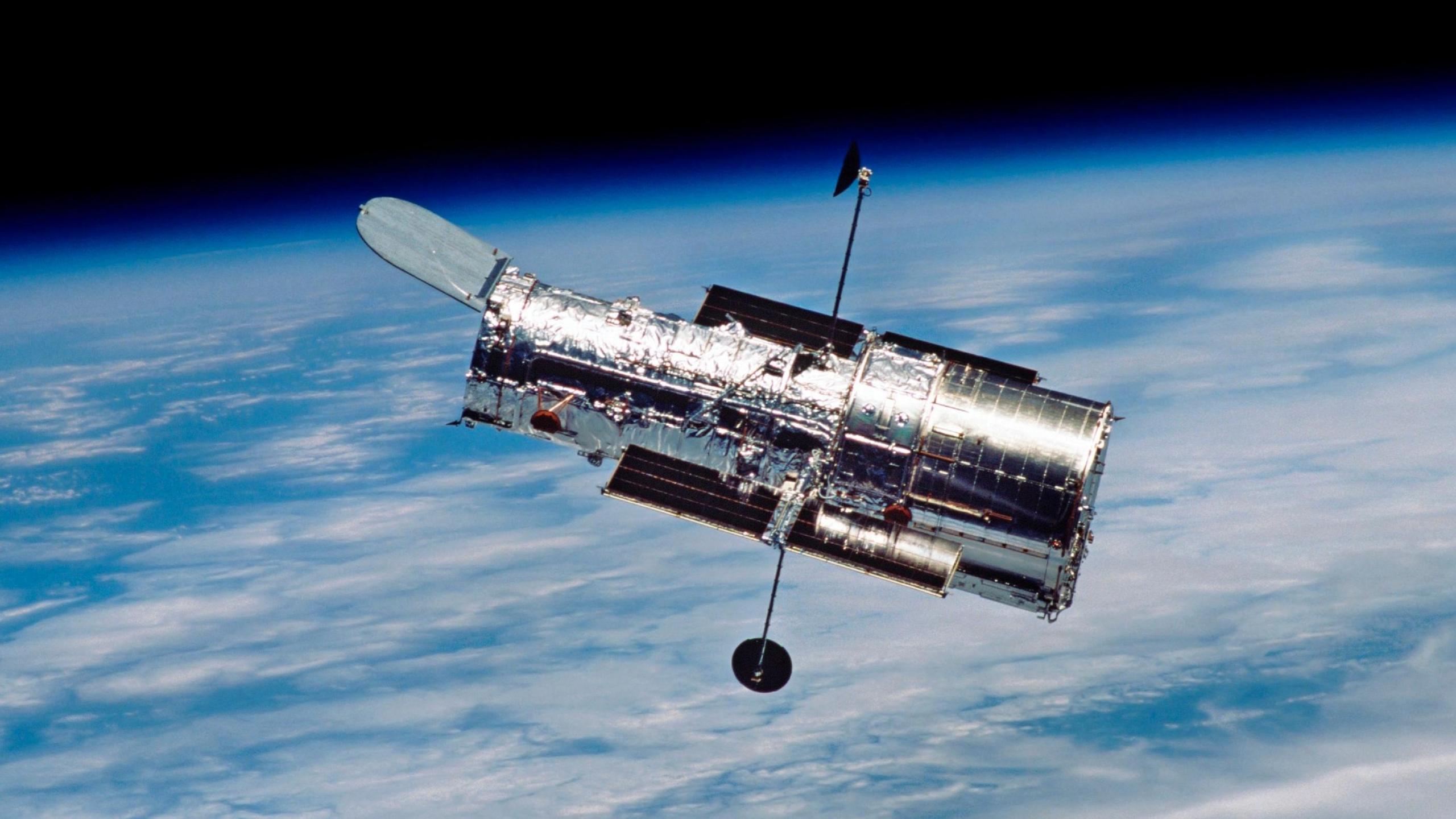
The Hubble telescope is one of Nasa's most important research tools
What is the Hubble Space Telescope?
The Hubble Space Telescope has been operating since 1990 and continues to make ground-breaking discoveries.
Hubble is a project between Nasa and the ESA (European Space Agency).
Floating 350 miles above our heads, Hubble has beamed back images that are not only incredible to look at, but have completely changed our understanding of the universe.
"We wouldn't be able to see all of these intricacies without Hubble's amazing resolution," said Anna Trindade Falcão.
More news about black holes
- Published20 February 2024
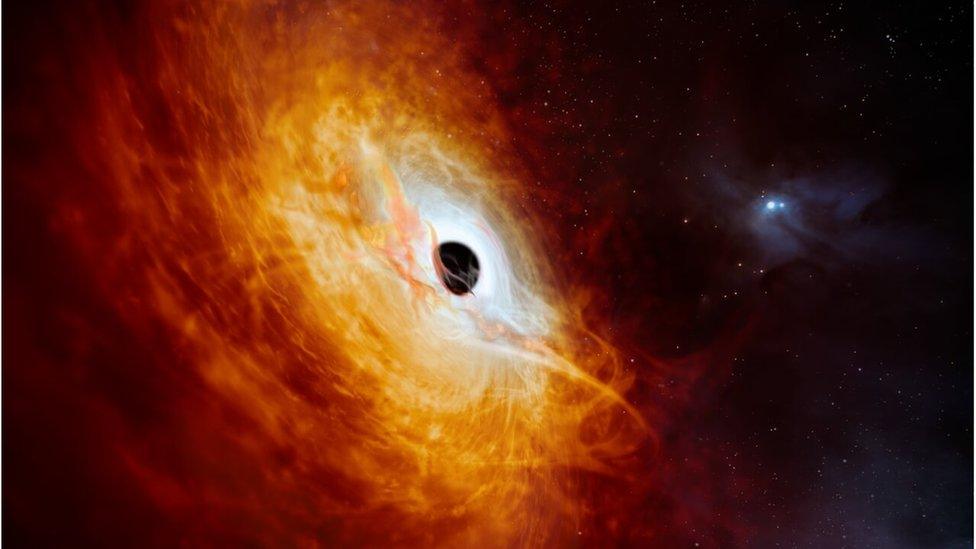
- Published18 June 2024
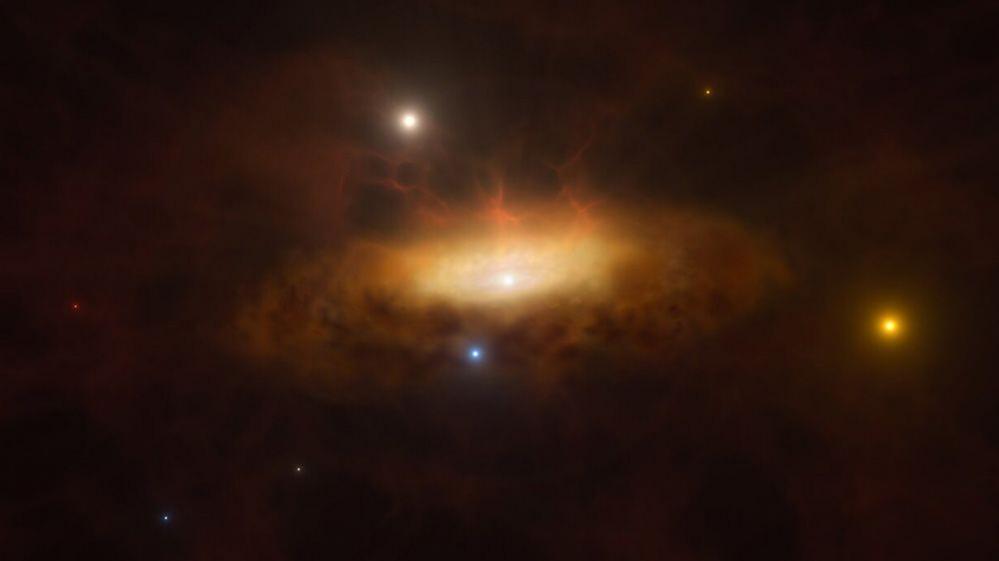
- Published8 May 2024
